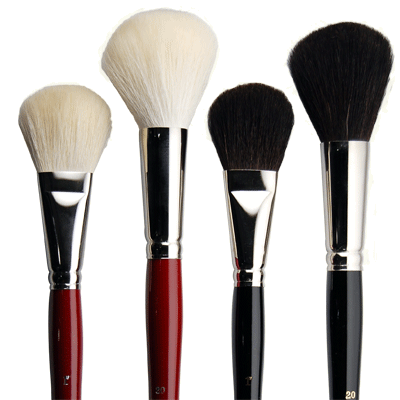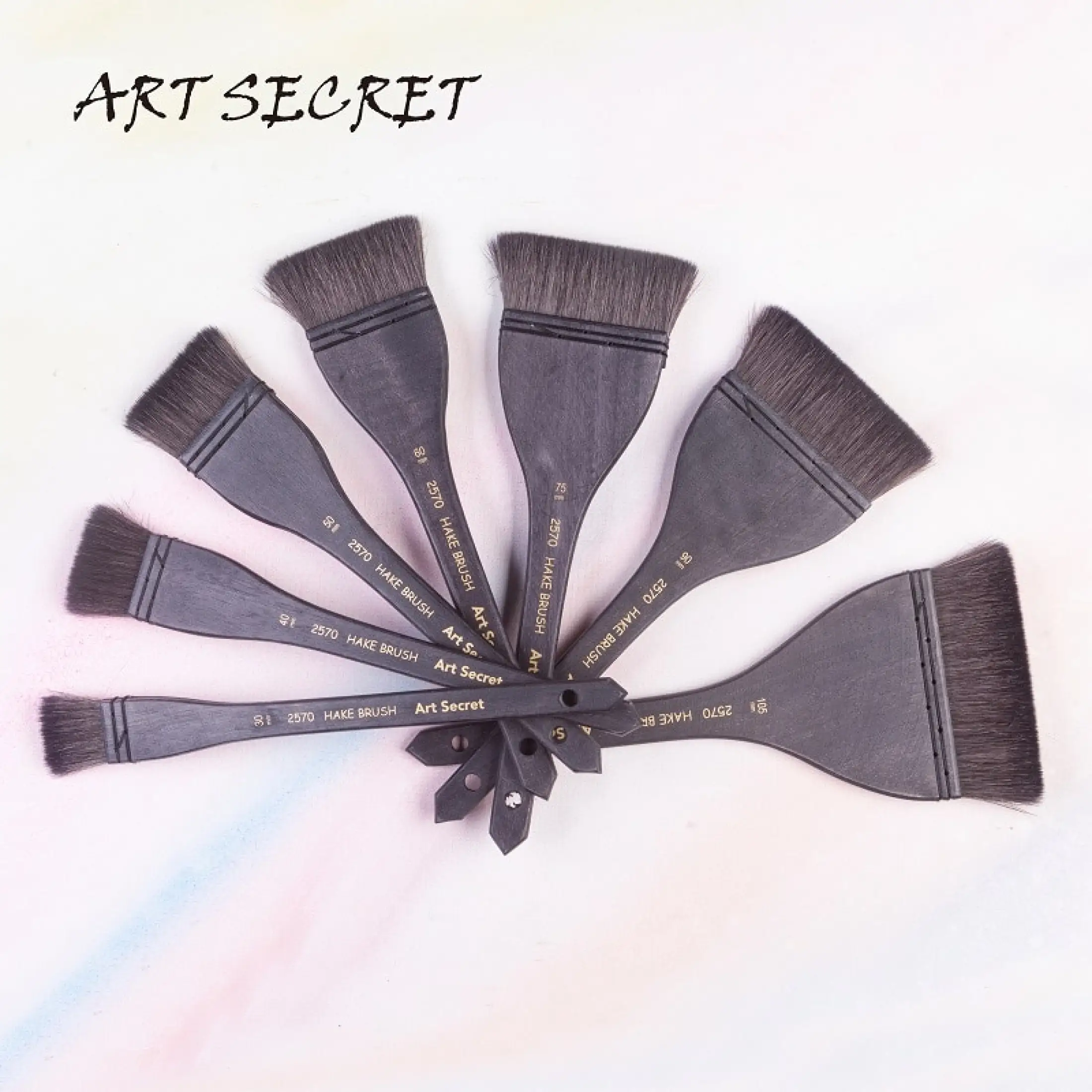The Art History Brush tool paints with stylized strokes, using the source data from a specified history state or snapshot. By experimenting with different paint style, size, and tolerance options, you can simulate the texture of painting with different colors and artistic styles.
Like the History Brush tool, the Art History Brush tool uses a specified history state or snapshot as the source data. The History Brush tool, however, paints by re-creating the specified source data, while the Art History Brush tool uses that data along with the options you set to create different colors and artistic styles.
Artist Blending Brush

Note:
Blending isn’t a bad thing, but the techniques used in oil painting will create contrast in brush strokes. You don’t actually want your colors to be smoothed together too much. This is yet another style of painting where you need to be loose with your brush strokes. Try to blend as little as possible. Arteza Real Brush Pens, 96 Paint Markers with Flexible Brush Tips, Professional Watercolor Pens for Painting, Drawing, Coloring with Water Brush, 100% Nontoxic Watercolor Brush Pens - 48 Vibrant Coloring Pens & 2 Blending Brushes - Premium Quality Art Supplies Featuring Soft, Real Tip - Perfect for Calligraphy, Lettering, Adult Coloring. Buy MAC's professional-quality eye brushes to shade, blend, sculpt, define or line any part of the eye. Free shipping and returns on all MAC orders. There are 8 main types of artist paint brushes that are used with acrylics, shown above. Each one is specially intended for different uses. Before we get into the particular uses of each paintbrush, let's get a quick low-down of the different parts of the brush: Get to know your paintbrush. A paintbrush is made of 4 main parts.
For various visual effects, experiment with applying filters or filling an image with a solid color before painting with the Art History Brush tool. Also try increasing the size of the image by a factor of 4 to soften the details.
A. Original B. Usinga small brush C. Using a large brush
- Inthe History panel, click the left column of the state or snapshotto use as the source for the Art History Brush tool. A brush iconappears next to the source history state.
- Choose a brush from the Brush Presets picker, and set brush options. (See Select a preset brush.)
- Choose a blending mode from the Mode menu. (See Blending modes.)
- Choose an option from the Style menu to controlthe shape of the paint stroke.
- For Area, enter a value to specify the area coveredby the paint strokes. The greater the size, the larger the coveredarea and the more numerous the strokes.
- For Tolerance, enter a value to limit the regionswhere paint strokes can be applied. A low tolerance lets you paintunlimited strokes anywhere in the image. A high tolerance limitspaint strokes to areas that differ considerably from the color inthe source state or snapshot.
More like this
The Loaded brush is a beautiful mystery. It combines multiple techniques into one motion that when properly affected can produce beautiful results. This method was pioneered by Mr. Ben Komets in the miniature painting world and has captured the imaginations of many.
This is a stunningly tricky technique though that can be reproduced with some time and practice. Once again I’d like to reemphasize that this is a technique that has been done for a long time in the traditional art world. If they can do it so can we!
So let’s jump into the technical side of things. What is happening frame by frame with Loaded Brush blending? If this is your first time here and you’re looking to learn the Loaded Brush I would highly recommend checking out the articles on Feathering and Wet on Wet blending first as they are the two building blocks for this technique.
Feathering left and Wet on Wet to the right
So we have our pallet and brushed at the ready and we’re going to practice loaded brush blending on our flat surface. We need two things on the pallet.

1 – A color that will be loaded into the brush (any color will do).
2 – Some kind of thick artist acrylic for the highlight or shadow. ( I use Schmincke, Golden is another great brand)
Next we need to thin down our color, there is a lot of variance in this and from experience I can say it needs to be somewhere in the thick to thin layer consistency. The paint needs to have some kind of body in the brush.
Next we remove some of the paint to find the right amount. The brush needs to keep paint on it but not be dripping paint off of it. But it also needs to not just be damp with the color.
After this we grab a bit of white on the tip of the brush. This tip should be some what spherical in nature but there is quite a bit of leeway. This can be a highlight or shadow color.
So we’re all set up and ready for action what next!?
We’ve come to the actual action of application.
First the white should be set down and then in the same zig zagging feathering motion draw out the highlight. While this is happening the back end of the brush is being set on the surface to allow the color to create the wet surface for the highlight to diffuse through.

The feathering action is continued to assist in the creation of the transition
Alternatively if there is just a small amount of color on the tip then the brush hairs can be splayed with more pressure allowing the paint to come forward onto the surface. The feathering motion stays the same.
Here’s a gif of a second loaded brush. Each one will beu unique in a way depending on the amount of color on the tip and the size of the surface worked upon
Any problems in the transition can be cleaned up with Glazing.
The key here is to practice. Here’s the bust that was practiced on it took a lot of trial and error and a lot of time. If it doesn’t happen in the first 5 tried do it 5 more times. Play with the consistency of the paint, play around with the tip shape. Just don’t give up to quick!
There is no magic formula though except to learn by practicing.
Best Paint Brush For Blending Chalk Paint
Hopefully this article has been helpful in explaining the details of it. It’s certainly a tricky technique that even takes some warming back up to for myself. But i’m confident after a little work you can start to achieve some fantastic results! For even more examples from Master Ben himself check out this video here.
If you liked this and want more come support me at my Patreon for as low as 5$!
Here’s the Gif again at half speed
